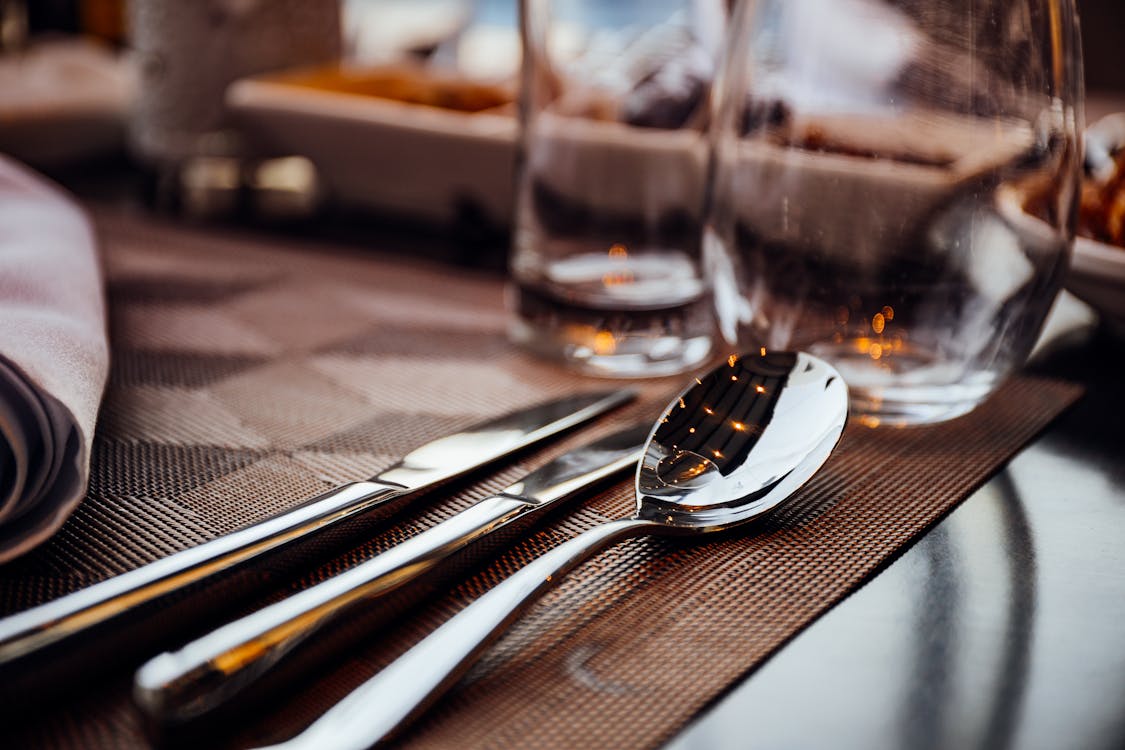Hey there! Do you have any silverware that you want to keep shining for years to come? Whether it’s your grandma’s vintage silver tea set or your everyday silver-plated flatware, regular cleaning and polishing is essential. Not only does it prevent tarnish from building up and causing permanent damage to the silver, but it also helps to remove dirt and grime while enhancing its beauty. In this article, we will talk about the benefits of keeping your silverware clean, the different types of silverware, the materials you’ll need, preparation steps, cleaning methods, expert tips and techniques, and proper storage.

Benefits of Regular Cleaning and Polishing
Silverware, like any other household item, collects dust, dirt, and grime over time. If not cleaned and polished regularly, the tarnish can build up and cause permanent damage to the silver. Regular cleaning and polishing help to prevent tarnish, remove dirt and grime, and restore the original shine of the silverware. It also prevents bacteria and germs from breeding on the surface.
Types of Silverware
There are several types of silverware, each requiring different cleaning and maintenance methods. The three most common types are:
- Sterling Silver
- Silver Plating
- Other Precious Metals
Sterling silver is a high-quality silver alloy consisting of 92.5% silver and 7.5% copper or other metals. It is commonly used for fine jewelry, flatware, and other decorative pieces. Sterling silver is relatively easy to clean and polish, but it is also more susceptible to tarnish than silver-plated or other precious metals.
Silver plating is a process of coating a base metal with a thin layer of silver to give it the appearance of solid silver. Silver-plated items are less expensive than solid silver and are commonly used for flatware, serving pieces, and decorative items. Silver-plated pieces require less maintenance than sterling silver, but they can still tarnish over time.
Other precious metals, such as gold, platinum, and palladium, are sometimes used in the production of silverware. These metals require different cleaning and polishing methods than silver, and it is essential to know the specific requirements for each type of metal.
Materials Needed
Before you start cleaning and polishing your silverware, gather the necessary materials. These include warm water, a soft cloth or sponge, special polishes and solutions, and possibly gloves to protect your hands.
Preparation Steps
Before you begin cleaning, take a moment to inspect your silverware for any damage or tarnish. If you notice any scratches or dents, take care not to worsen them during cleaning. Separate your pieces by metal type and prepare your cleaning area.
Cleaning Methods
There are several methods for cleaning and polishing silverware, depending on the severity of the tarnish and the type of metal. The most common methods include:
- Removing Stubborn Tarnish with Harsh Chemicals
- Using White Vinegar and Baking Soda Solution
- Applying Silver Polish to the Surface

Removing Stubborn Tarnish with Harsh Chemicals
For heavily tarnished silverware, you may need to use a harsh chemical cleaner such as Tarn-X or Wright’s Silver Cream. Be sure to follow the instructions carefully and use gloves to protect your hands. These harsh chemicals can be damaging to your skin and should be used sparingly.
Using White Vinegar and Baking Soda Solution
For less severe tarnish, you can make a solution using white vinegar and baking soda. Mix equal parts of each and soak your silverware for 30 minutes to an hour. Rinse the pieces thoroughly and dry them with a soft cloth.
Applying Silver Polish to the Surface
Silver polish is a popular method for cleaning and polishing silverware. Apply the polish to a soft, clean cloth or a sponge, and then rub it onto the surface of the silver. Be sure to cover the entire surface of the silverware with the polish, taking care to get into any crevices or intricate designs. Avoid using too much pressure or rubbing too hard, as this can scratch the silver.
Once you’ve applied the polish, allow it to sit on the silver for the recommended amount of time, usually indicated on the packaging. This allows the polish to work its magic, loosening and removing any tarnish or discoloration on the surface of the silverware.
After the polish has had time to sit, use a clean, dry cloth to buff the surface of the silverware. This will help to remove any remaining polish residue, and will give the silver a shiny, polished finish. You may need to repeat the process a few times, depending on the level of tarnish and the desired level of shine.
Finally, rinse the silverware thoroughly with warm water to remove any remaining polish residue, and dry it carefully with a soft, clean cloth. Store your silverware in a cool, dry place to prevent tarnishing in the future.
Another tip is to use a silver cloth or polish regularly instead of waiting for the tarnish to build up. This will help to maintain the shine and prevent tarnish from forming. Additionally, avoid using your silverware for acidic foods, as these can cause tarnish to form more quickly.
Final Thoughts
Cleaning and polishing your silverware is an essential part of its maintenance and can help to keep it looking beautiful for years to come. With the right materials, preparation, and techniques, you can safely clean and restore your silverware to its original shine. Just remember to take extra care with delicate pieces and avoid harsh chemicals and abrasives. With a little effort, your silverware will continue to sparkle and shine for many more special occasions to come!

